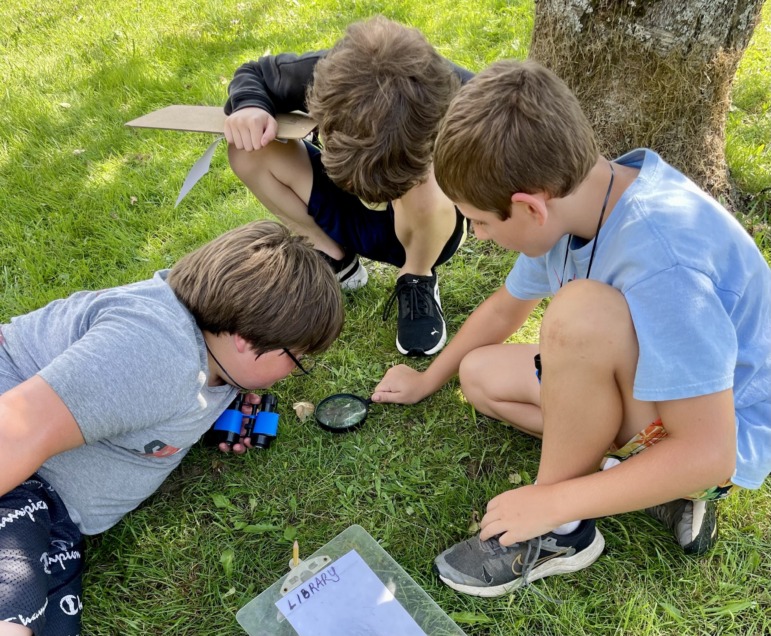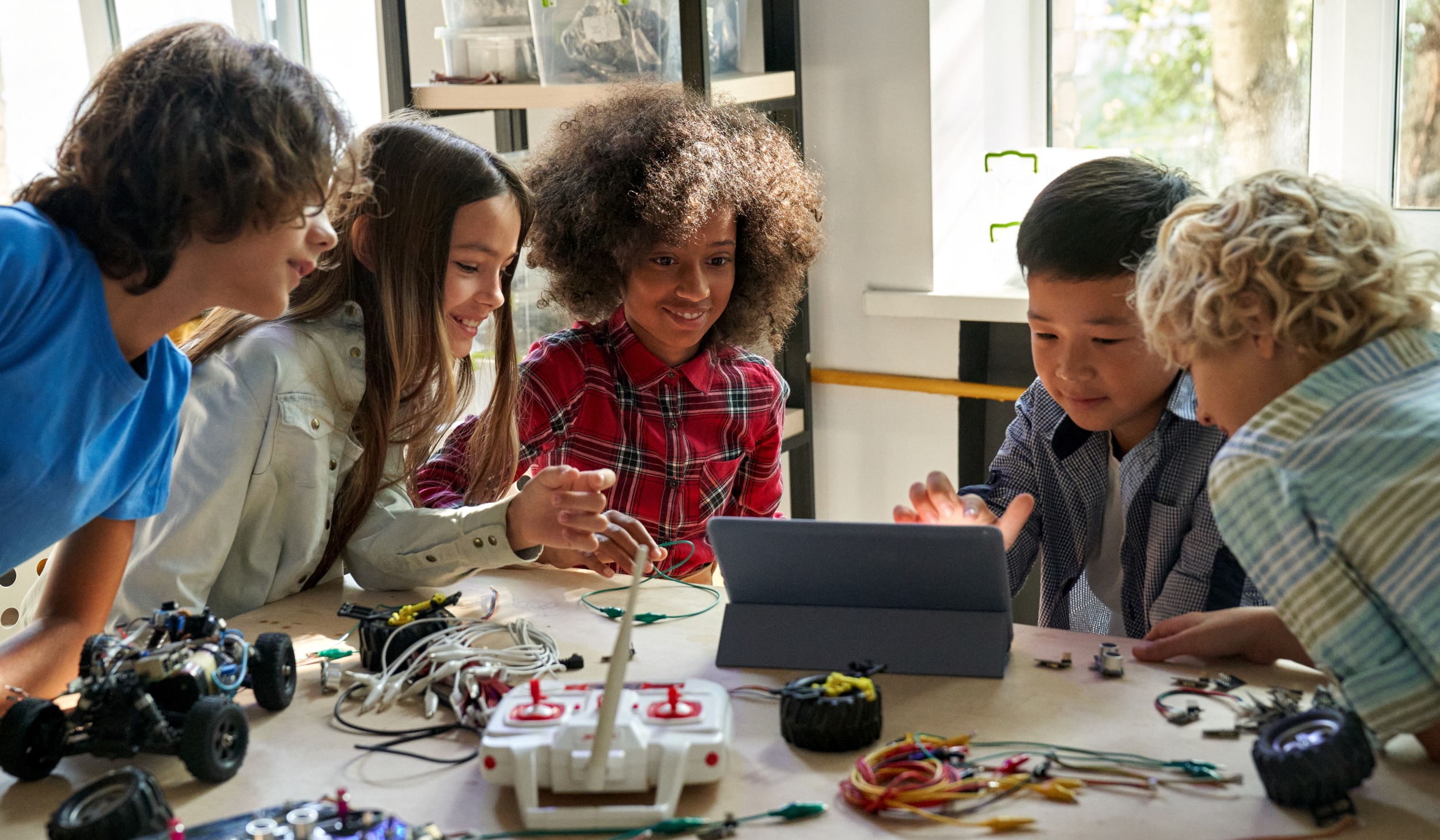On a given Monday after school, public school students in the Northeast Kingdom of Vermont — a rural part of the state in the northeast corner — could learn how to cook with foods straight from the farm. On Tuesday, they could practice martial arts. On Wednesday, they might participate in a Lego building competition. And it all takes place right at school.
This last year, they’ve also been able to ride bikes with their friends around their schools thanks to three new mobile bike trailers — with 40 bikes each, plus helmets and gear — that make stops at the nine different elementary schools in the area.
“Every week, I have a site coordinator or a staff member tearfully telling me how excited they are about a student who, it just clicked for them, and then they’re riding a bike for the first time,” said Beth Chambers, program coordinator for the North Country Supervisory Union Encore Program, which has provided these afterschool opportunities to kids for 20 years.
“We live in an area where there’s no mall, there’s no place for kids to hang out. There’s not a lot for kids to do. … Having special things like the mobile bike trailer has really opened up opportunities for kids and made them excited,” she added.
The Encore program was able to purchase the bike trailers due to the influx of federal ESSER funds that were given to districts and states to help kids catch up and thrive after the disruption of the pandemic. From the last and largest distribution, which came from the American Rescue Plan, $1.2 billion was set aside specifically for afterschool programs.

Courtesy of North Country Supervisory Union Encore Program
Students participate in an activity at the Encore afterschool program in northeast Vermont.
Data released earlier this month from an annual National Center for Education Statistics survey, which began in 2021, shows the impact that ESSER funds have had on afterschool programs, from creating new ones to bolstering long-running ones with more resources and staffing. The survey results show the promise of investments in afterschool programs, but afterschool advocates are concerned about what will happen when the ESSER funds run out next September.
The data showed that most academically focused afterschool programs were free to parents. But in the next year or two, some parents may need to start paying to help keep them afloat, advocates cautioned.
According to the survey results, 87% of public schools are offering some kind of afterschool programming this year. Of those, 64% are offering academically focused programs, reaching 13% of the total public school student population across the country.
“The new data tell an important story about the additional opportunities available to help students beyond the school day, especially at a time when academic recovery from the pandemic remains a top concern,” said NCES Commissioner Peggy Carr in a statement.
Studies have shown that the pandemic and resulting school closures had a disproportionate impact on learning for non-white and Latino students and those from lower-income households. Non-white students were also more likely to suffer mental health setbacks. The NCES data shows that students attending schools in high-poverty neighborhoods and schools with a high percentage of students of color were more likely to participate in academically focused afterschool programs, demonstrating that at least some of the funds are going where they are needed most.
But not all students are being served equally. Students in rural areas and in the Midwest had lower participation rates in academic programs than their peers. And, according to the Afterschool Alliance, in many schools, kids are also still waiting to get into a program.
The survey asked principals whether they used ESSER funds to establish or enhance academic afterschool programs. Of the more than 50% of schools that are offering these programs, a quarter said they created new programs with ESSER funds and 64% said they enhanced existing programs.
Chambers described the ESSER funds as “hugely impactful” in her afterschool program. They helped expand her budget from $700,000 in 2019 to nearly $1.1 million this year.
The deadline to spend the last portion of ESSER funds, however, is less than a year away. Chambers hopes to continue offering most of the programs her organization currently does, as well as keep the raises she was able to give staff, with other sources of funding and grants.
Phyllis Jordan, the policy and communications director at EdFund, a recently launched nonprofit focused on public school finance, said some districts seem more prepared than others for the impending funding cliff. When costs need to be cut, afterschool programs could be the first to be impacted, she said.
“People in education have known for years that afterschool can have a powerful impact on how kids learn,” Jordan said. “But this infusion of cash really gave a proof of concept that this is something we need to do. The challenge now is that this money is going away. How do you keep it going? That’s the big question a lot of districts face.”
Advocates like Jodi Grant, executive director of the Afterschool Alliance, push for sliding scale payments based on family income. In the Vermont afterschool Encore program, families can pay a suggested donation of $25 per eight-week session. About 60% of families donate an amount they choose, Chambers said. Other funding, if not from local or state governments, could come from philanthropy, which often funds out-of-school programs like the Boys and Girls Clubs, Grant said.
But Grant hopes that the NCES data will push local and national leaders to continue investing in afterschool programs, particularly holistic programs that offer art, sports, and even nutrition, in addition to academic support.
“I think there’s a huge social call for afterschool,” Grant said. “We hear that from parents, we hear that from kids. Playing on a sports team, especially if you’re not an elite athlete, gives you all sorts of opportunities to interact with other people in a way that’s really positive. Being part of a school musical, being part of a paper — there’s all these activities that really give kids a sense of meaning and purpose.”
Research shows that afterschool programs can lead to better education outcomes for students, higher attendance in school, and improvements in social and emotional learning. It’s also linked to lower dropout rates and can help close achievement gaps among students.
Laurinda Maxwell, a second-grade teacher at Charleston Elementary School in Vermont and a site coordinator for the Encore afterschool program, recalled an elementary student who started participating in art activities in the afterschool program years ago and “just really flourished,” Maxwell said.
The student stayed involved in art classes through high school and eventually went on to earn an art degree in college. She even stopped by to visit her old school and work with kids in the afterschool art program years later.
“A lot of our staff work in the afterschool program, so our relationships with the kids are stronger,” she said. “It just builds our community.”
***
Colleen Connolly is a Minneapolis- and Lima, Peru-based journalist who covers topics including education and child welfare.




























